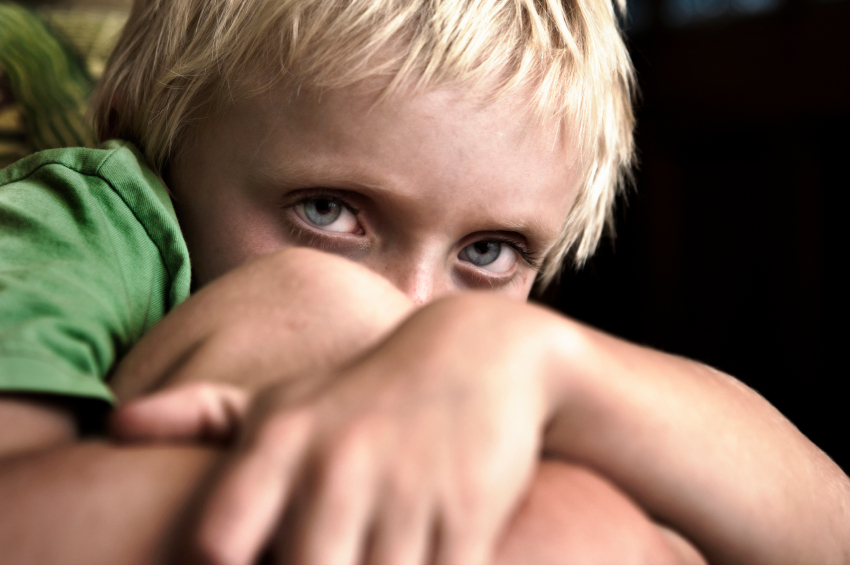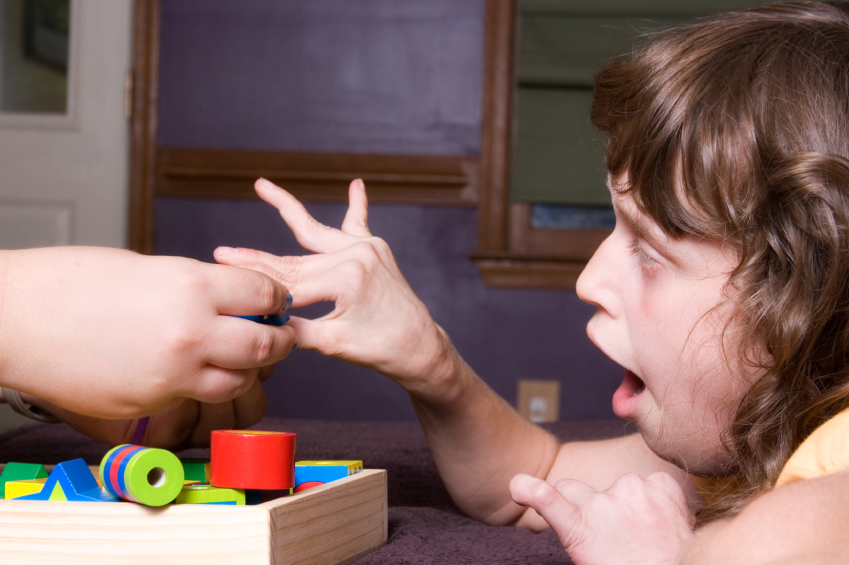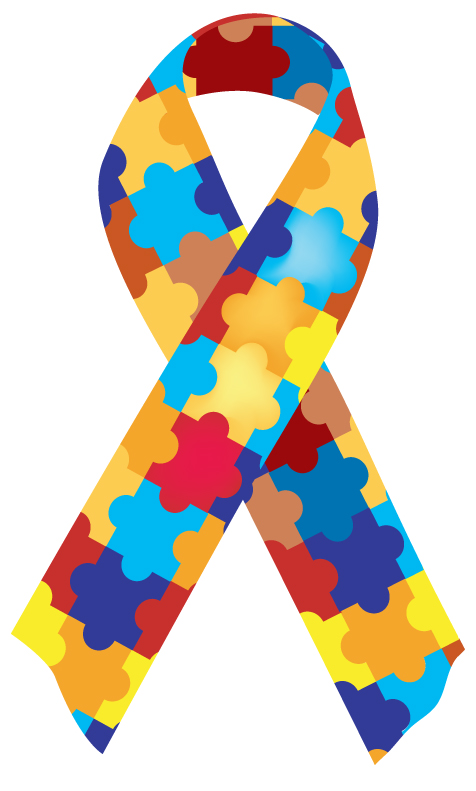When Josh was placed in my arms moments after he was born, I gazed into his beautiful blue eyes. I recall feeling that life does not get any better than this. I thanked my lucky stars for this perfect little blessing. When the nurses shouted out “hypospadius!” as they assessed his every nook and cranny, the delivery room doctors and nurses reassured me that the condition, an abnormal opening of the penis, is “fixable.”
Relieved, I returned to bathing in the bliss created by the arrival of my sweet angel. They brought him to me swaddled in a blue and yellow polka-dotted cotton blanket and tiny knitted yellow cap. He was the sweetest sight imaginable as he looked around wide-eyed at the marvel of new beginnings.
Josh’s early childhood seemed normal, but between 18 months and two years, those few coveted words he had acquired... “Stop,” “up,” “ball” and “juice,” were uttered less and less frequently. It was as though a water faucet was being turned off in slow motion. Instead of flowing out of him, language appeared to be flowing away from him. I began to notice that for seconds to minutes at a time my beautiful toddler would stare off in a distant, hypnotic gaze. For the duration of the spell, nothing I said could penetrate his gaze or divert his attention.
We began to have Josh tested by a series of different medical professionals. First we went to an audiologist, wondering if maybe he was losing his hearing. Josh sat in a chair in a cold, sterile soundproofed room with an enormous pair of black headphones on his tiny head. As sounds beeped on one side and then the other, he clearly seemed annoyed by the noises. He could definitely hear. Once he exited the room, he smiled and giggled, as he often did, in response to all sorts of different stimuli unseen to the rest of us. It made me wonder what he was thinking about. I longed to understand him.
Next Josh was evaluated by a speech pathologist. I brought him there on a rainy November afternoon. She did a litany of tests without me in the room, despite Josh’s protests. When Josh emerged, he looked sleepy, and he was clutching his little blanket along with a new label... “Speech delay of one year.” It didn't sound terribly ominous, so it was a label we adjusted to, taken on like a heavy new sweater we would dutifully wear. I felt I could deal with it.
There were so many things I wanted to know. Why didn’t he respond when I called his name? Why did he like to lie so close to the wall, facing it for hours on end while laughing? Why did he take me by the hand to the pantry and throw my hand up to the cabinet to get me to open door? Why didn’t he wave bye-bye or want to play peek-a-boo? Why did he drop to the floor periodically and just scream? Why did he love to spin in a circle until dizziness hurled his tiny body to the floor? Why didn’t he point to objects in an attempt to learn about the environment, like every other kid his age? Why didn’t he sleep at night instead of jumping on his bed, endlessly giggling until the sun rose?
I was also very worried about Josh's continual staring spells, up to 50 or more in a given day. Each lasted 15 to 30 seconds and, although they were brief, they were very intense. I finally took Josh to a neurologist. He was two years and eight months old. Dr. Ingrid Taff, a well-respected neurologist in Great Neck, NY. performed a standard test for epilepsy, called an electroencephalogram, commonly called an EEG. This test measures and records the electrical activity of the brain through sensors (electrodes) attached to the outside of the skull and hooked up to a computer. The computer records the brain's electrical activity on the screen or on paper.
Josh pulled the electrodes off as quickly as we tried to put them on, but we prevailed with the test, and his EEG result was normal. In retrospect, this did make sense, since he was not having one of his staring spells during the test itself, and I soon learned that an EEG can only record what's happening the brain at that moment. Still the doctor felt strongly that the spells were compelling enough to warrant a trial of anticonvulsant drugs. She suspected “absence seizures,” which are a type of seizure caused by a misfiring of electrical impulses deep in the temporal lobe; the portion of the brain where much of language development originates. The doctor believed that the EEG could fail to pick up these seizures. Once Josh was stable on a proper dose of an anti-seizure drug, such as Carbamazepine (Tegretol), Dr. Taff believed he would begin to speak and learn.
The words “speak” and “learn” were like honey pouring over me. I drank them in desperately and prayed that the doctor was right that Josh had a seizure disorder. Imagine, hoping and praying for such a thing! That is how devastating some of the alternatives felt. If Josh had something that could be treated with medications, we could move forward with a more normal life. Yes! That would be wonderful! I could feel the burden slowly lifting as she spoke. I had some renewed hope.
Josh was prescribed Tegretol to control his suspected absence seizures. Unfortunately, within 24 hours of taking his first dose he developed a head-to-toe, welt-like rash, and we took him off the medication immediately. The next day, by coincidence, he had a long-awaited appointment with a neuropsychiatrist who was, we were told, an expert on developmental disorders.
The doctor pointed out that Josh made very limited eye contact and made no appropriate response to any requests. During the exam Josh moved about the room singing a few words from the songs he had memorized from his favorite Raffi tape, “Baby Beluga la-la-la.” He really seemed to be tuning out the world that day. As we watched the scene unfolding before us, the doctor asked about Josh’s difficulty attending to any one specific task. He told us that typically children Josh’s age (he was two at the time) would use sentences to communicate, and that typically they understand even more language than they use.
Watching Josh with what I thought was a measure of objectivity, I surmised that he must be very tired, a bit cranky from the itchy rash, and maybe feeling a tad stubborn. The doctor had a different take on it. He told us simply and clearly: Your son Josh is autistic.
I will never, ever forget that day. I could barely see the doctor’s impassive face through my cascading tears. As they fell in torrents on my shirt, I looked over at my then-husband, who was looking pained. The diagnosis was searing in its honesty.
The doctor went on to say, “Most of these children have a lifelong developmental delay and have great difficulty adjusting socially. Most children with autism have mental intellectual impairment, and only about 20 percent have normal or above-average intelligence.” He felt Josh had varying degrees of cognitive ability, with memory being one of his strengths.
This doctor said that he thought the staring spells were likely an integral part of Josh’s autism rather than a separate or treatable entity. We took his advice, discarding the idea of treating Josh’s ‘invisible’ seizures. In hindsight, I believe this was a tragic mistake.
Many years later as I began to put together the pieces of our puzzle, I realized that Josh had a seizure disorder all along. As it progressed, its manifestations went well beyond staring spells. Josh's more severe seizures produced vicious rage, undirected horrific violence and self-mutilating behavior, including bites that have left his skin forever scarred. Knowing what I know now, I agonize over a wish that I could somehow go back in time and change the choices I made.
We trust that medical professionals have great understanding of the many human afflictions, and we trust them with our lives. Yet there are those times when it's difficult to obtain a clear, definitive diagnosis. Many human conditions still remain a mystery as to the cause and a viable treatment. Autism certainly falls into this category.
Parents and caretakers of children with autism need to arm themselves with as much knowledge as they can possibly glean from those who have made in-depth studies of this perplexing disorder. It is so important to work with a team of experts who have the background to understand and treat the complexities of this disorder called autism.
The lovely actress Jenny McCarthy trusted her instincts when she realized that her son Evan, who was diagnosed with autism, also had additional underlying medical problems. In 2007, McCarthy published the book, Louder than Words: a Mother’s Journey into Healing Autism, in which she described the terror she felt when witnessing her son’s seizures, finding him in his room "struggling to breathe," she screamed "something is wrong with my Evan." Unfortunately, this was not an isolated event, and she would endure many more similar moments on her journey. McCarthy became increasingly frustrated and realized that Evan had many issues yet to be discovered by the testing. She knew there was more to the story, and she told her son’s doctors, "Guys, I feel like we might be missing something.”
So often we rely on inexact science to tell us what is wrong with our children without questioning that science. This can sometimes lead to the erroneous assumptions we all make as to why a child lashes out, screams or becomes violent, but the truth is we really don’t always know. The reason we don’t know is that most of these children cannot answer the basic question, “What’s wrong?”
How many of us really have the tools we need to dissect the behavior of our autistic children? When we are told by experts, "this is just the way they are,” we believe it, because we, as parents and average people, don't have the tools to look further. So we grieve the loss and go on with our lives, accepting without question that our children bang their heads for no reason, walk on their toes, cling to a wall in fear, cover their ears and stare into space. We believe that this is just a part of autism, a disorder for which no existing remedy can significantly alter the course.
What we -- and most doctors -- may not recognize at this point in time is that these behavioral traits are also common manifestations of temporal lobe or frontal lobe seizures in children. Untreated, temporal lobe epilepsy predisposes children to developing the similar types of behavioral disturbances, such as self-injury, aggression and psychosis, which are seen in many cases of autism.
An “absence seizure” (formerly known as a petit mal seizure) is a sudden loss of consciousness in a person with epilepsy. The person appears to “blank out” and may not remember the brief episode later. I had an opportunity to witness this type of seizure first-hand years ago. My college roommate’s sister had epilepsy, and numerous times a day she would stare into space blankly for periods of 15 to 30 seconds. At the time I found it strange and interesting as she simply “zoned out” and then, blinking her eyes, suddenly came back in less than a minute. I could have assumed she was daydreaming. But she shared her medical history with me, so I knew what was happening.
The memory of that experience came rushing back when Josh began his episodes of staring out at nothing, at nobody, into some unreachable alternate universe beyond my reach and immune to my love. I recalled seeing my roommate’s sister do the same thing... she would simply stop and stare out into space at nothing. Although she was deemed normal in every way, she was visited multiple times a day by these “silent seizures.”
When I went to the medical community seeking answers to my questions about the possible relationship between Josh’s condition and a seizure disorder, initially I was met with staunch resistance and closed doors. Josh had started slipping away into brief dreamy episodes too numerous to count, and by age 12 these episodes had the added characteristic of uncontrollable aggression. It was a kind of madness in which strange, acrid smells lingered in his perception and odd voices screamed at him from inside his head. He told me he heard potato chip crunch sounds, and he covered his ears often. However, no one in the medical community listened to my theory that many years of brief partial seizures had morphed into a pattern of complex partial seizures, possibly underlying and exacerbating my son’s autism.
And thus I began my quest to understand the seizure connection as it relates to the diagnosis of autism.
Why didn’t the doctors want to believe that Josh could be suffering an underlying syndrome of silent seizures? Why were they so willing to discard Dr. Taff’s earlier assessment of a seizure disorder? Was it simply the lack of clinical proof causing a disregard of what seemed to be so obvious?
EEGs were ordered by various epilepsy experts, and all showed normal results. But results of EEG, MRI (magnetic resonance imaging) and other tests used to detect seizures can sometimes be completely normal despite a true diagnosis of epilepsy. Many experts agree that the diagnosis has to be made “clinically,” that is, based on a description of the person’s symptoms and the patterns in which they occur. This is how Dr. Taff diagnosed Josh years earlier.
 Back in the world of autism, many professionals who consulted on our case labeled Josh’s odd behaviors (facial grimacing, eye blinking, and fluttering) as “stims,” a short term for self-stimulatory behavior. His habit of staring for brief intervals throughout the day was given the euphemism of “light gazing.” Once, as he was observed staring off into space, eyes transfixed for about 30 seconds, a behavioral therapist surmised that this was his way of internally stimulating himself. She was taught that this staring behavior is purposeful and has some benefit to him. She did not take into consideration the possibility that these stims could be manifestations of seizures.
Back in the world of autism, many professionals who consulted on our case labeled Josh’s odd behaviors (facial grimacing, eye blinking, and fluttering) as “stims,” a short term for self-stimulatory behavior. His habit of staring for brief intervals throughout the day was given the euphemism of “light gazing.” Once, as he was observed staring off into space, eyes transfixed for about 30 seconds, a behavioral therapist surmised that this was his way of internally stimulating himself. She was taught that this staring behavior is purposeful and has some benefit to him. She did not take into consideration the possibility that these stims could be manifestations of seizures.
The doctors told me that when he reached puberty, my son’s behaviors could “get much worse,” but nobody ever dared to detail what that might look like, so I was not at all prepared for what was coming. Since conventional tests still did not register any signs of seizure activity, Josh’s doctor suggested that he probably suffered from a “mood disorder with psychotic features.”
Josh was then treated with high doses of anti-psychotic drugs, including Risperidone (Risperdal), which was supposed to help relieve his “mood disorder.” But the drugs made him much worse, which should have been a tip that something else was behind his out-of-control behavior. At times, Josh was capable of being happy, gregarious and loving. In contrast, a person with a diagnosis of psychosis (such as schizophrenia or severe depression) would be completely lacking in emotional connection with others and appear out of touch with reality.
Josh has been on his bed watching TV. Suddenly, he calls out profanities as he rudely asks someone, a hallucinated entity, to leave him the f*** alone. I run, trying to negotiate the stairs two at a time, so I can try to keep him from hurting himself.
His body is shaking, his pupils enlarge, and his shrill screams fill the air. His eyes glaze over as if possessed by some demon. “My eyes aren’t working, my eyes aren’t working, Mom!” he screams. Then the staring. No movement for about 30 seconds, eyes widened, as he is transported to a far-away place. “My brain is broken!” he bellows as he repeatedly taps his head.
Then his fear turns a dark corner. He becomes enraged. He lunges at me and in a second, his hands are suddenly around my neck. I try to extricate myself from his grip as his anger intensifies. In the seconds that follow, he throws a punch with such force it hurls me backward on to the floor. I clutch my face in pain and disbelief. My blood is everywhere.
“The Ninjas have guns,” he growls. He begins to kick into the air while making combat type sounds.
After a few more excruciating moments, the ninjas retreat. He is panting and seems to settle down. He looks at the devastating scene of smashed objects, blood and broken glass. He sees me holding my face and sobbing. He surveys the mess with profound confusion and sadness, and asks me, “What happened, Mom?” Just then, my precious son, now 18-years old, who was diagnosed with autism at the age of 2 years and 10 months, actually apologizes. “I am so very sorry, Mom. Can you give me a hug?”
I am reluctant in that moment out of fear, and I sheepishly refuse. He begins to sob with his head in his hands. He pleads with me, “Please, fix my brain.”
As Josh's adolescence raged on, I continued to talk to anyone who would listen about the idea that Josh may be having seizures. By this time, I was certain that Josh’s symptoms mirrored those of temporal lobe epilepsy. But sadly, I was starting to sound like a broken record. I began to be treated by the professionals as if I, too, had lost my sanity.
After years of relentless research I eventually found a community of doctors and researchers who believed that seizures were likely causing the syndrome of autism in Josh and in many other children. I have talked with parents of autistic children who shared their belief that their children also suffer from invisible seizures. I have come to realize that many parents of autistic children are dealing with similar situations.
I know that many more children like my son are out there, “silently seizing” because the scientific world has not yet fully embraced this perplexing connection. I resolved to find out as much as I could about the intersection of seizures and autism. I was fortunate to gain critical knowledge from the expertise and support of several top medical professionals in the field of autism.
One of the extraordinary doctors I have come to know is Fernando Miranda, MD, a respected neurologist who has held prominent positions at Johns Hopkins University and the University of Maryland. Dr. Miranda is the founder of The Bright Minds Institute, a groundbreaking organization dedicated to helping children with neurologic and learning disorders. Dr. Miranda speculates that as many as half of the children diagnosed with autism may actually be suffering from undiagnosed, difficult-to-recognize seizure disorders, resulting in the behaviors and symptoms we have come to call “autistic.” Dr. Miranda and a small number of other specialists are having impressive results treating these seizures in young patients diagnosed with autism.
I, along with many families, have walked blindfolded through this maze of autism and seizure until very recently. Now as the parent of an older child, I feel compelled to share what I have learned and help to provide other families with a guiding light on what can be a terrifying journey. I know and understand first-hand how devastating it is for a parent to be told that his or her beautiful child has an incurable, lifelong, neurodegenerative condition. Once the diagnosis has been made and the tears have lessened, I must tell you that there is tremendous hope.
In hindsight, I realize now that I missed an opportunity to diagnose and treat Josh’s invisible seizures early on. By inadvertently allowing his brain to continue to silently seize, we robbed his brain of its ability to function normally. The brain is a miraculous organ that tries to find new neural pathways to help compensate for injury. Josh is an artistic savant, meaning that he has a special skill that surpasses the skills of others who are not savants.. His brain, in an effort to overcome the damage, became enhanced in its area that controls artistic talent.
If Josh had been treated as a baby for his underlying seizure disorder, I truly believe his outcome would have been different. I lost valuable time that can never be recovered, as Josh’s brain is now irreparably damaged by years of uncontrolled, erratic electrical activity, yet he continues to make terrific strides.
Thankfully, my wonderful son and I are past the daily rages that once forced me to contemplate placing him outside the cocoon of a loving home. It took nearly ten years of trial and error, but finally the team found the right combination of medicines for Josh.
When children who are silently seizing are treated early with anti-seizure medications, many of them begin to show amazing gains in expressive language and comprehension. Many are beginning to speak and learn. Even more importantly for some, an absolute miracle is occurring: they are losing their diagnosis of “autism.”
Fortunately, we now live in a time when greater attention is paid to the baffling origins of autism spectrum disorders. There is much that can now be done to help these children once their underlying issues are fully understood.
Josh surveys the carnage of thrown objects and broken glass with profound confusion and sadness, and then while looking at his bloody hands, asks me, “Mom, what happened?”
Josh’s silent seizures are sudden and unprovoked. They always begin with a vacant stare, and then it appears that he is having auditory (sound) and visual (seeing) hallucinations.
“I hate monsters with one eye,” he roars. He then yells to the one-eyed monster, “Shut the hell up you mother f….”
He holds his ears. “I hear crunching potato chips in my ears and it’s so loud,” he cries out. Sometimes at the very beginning of a seizure he will smile for a brief moment in the midst of all the chaos. Often that smile is followed by a terrifying scream.
His pupils dilate and a piercing scream fills the air. He clenches his teeth and proceeds to pull out a clump of his curly hair and just then he opens his hand and slowly his blonde locks waft towards the floor. 
I hear that all-too-familiar scream and without a thought I traverse the staircase, two stairs at a time. I try to speak with him before he succumbs completely to this altered state. I want him to lie on his bed to minimize the potential for injury, so I try and guide him there while firmly speaking to him,” Get on your bed now!”
In the early stages of a seizure he will be able to listen and follow directions, but once it begins to spread across his brain he cannot be reached. Quickly his behavior deteriorates into a form of internal madness. His body is reacting too. First I see his right foot moving. Then, in rapid succession, his face produces an unfamiliar contortion resembling a grimace, and his eyelids flutter.
Suddenly, he punches the wall with his bare fists and says “Ouch,” yet he continues. In a split second he brings his fist to his mouth and bites down hard onto his hand, sinking his teeth deeply into his already scarred flesh, leaving deep red impressions, just as he did the last time, and the time before that.
His breathing gradually returns to normal. He is in obvious pain as he stares at his hand, trying to understand all that has just occurred.
When it is over he is always perplexed and always remorseful. It is obvious that he cannot control these visions of one-eyed monsters that accompany his seizure or the distorted sounds they hurl at his sensitive ears. He has some awareness that he is responsible for the carnage, and in calmer moments he taps his head and says “I need to control your head.”
Like so many with autism, Josh sometimes reverses his pronouns and uses “your” instead of “my.”
Imagine experiencing this kind of horror and the physical pain, being unable to properly express what you are experiencing, and feeling that somehow you are responsible for it and must learn to control it.
Sub-clinical seizures go unrecognized in as many as 50% of cases, even in individuals who can reliably tell others of their plight. Most people think of seizures in terms of the variety that cause a person to fully collapse into grand mal convulsions, which involve violent muscle spasms and loss of consciousness. Most of us are not familiar with the partial type of seizure that can go undetected and can be easily missed. But today, some specialists in the autism sphere are beginning to realize that sub-clinical seizures play a bigger role than formerly thought.
Recognizing non-convulsive seizures, particularly the simple and complex partial variety, is dependent upon one’s ability to objectively detect subtle changes in the afflicted person’s behavior and deterioration of their abilities. This is a difficult and challenging job. One would need intimate knowledge about the functioning level of the person, and most physicians don't have that knowledge. Physicians have to rely mostly on the reports and observations of caregivers, which is why it's so important that our reports are as comprehensive, detailed and accurate as they can be. We as parents know best how our children function when they are not seizing. Medical professionals are naturally less in tune with your child’s everyday “normal” behavior, and understandably could mistake unusual behaviors as mere manifestations of intellectual disability. When you believe that is not the case, you need to communicate with the doctors about your observations that led you to that conclusion.
EEG testing clearly has limitations, because the test may be negative in some cases of partial seizures, especially when the discharge originates in the frontal lobe of the brain.
To look deeper into the suspected seizure activity, video monitoring is helpful, and is best done when a patient is admitted to the hospital and has a continuous EEG, 24/7, for a defined period of time – usually three to five days. As an option, patients can have an ambulatory EEG that uses a small portable machine with leads attached to the scalp and a small machine worn as a shoulder bag. Any seizures that occur during the testing period will be recorded by either method, as long as they occur in an area of the brain where the electrodes can detect them.
“Tragically, there is a pervasive reluctance to make a clinical diagnosis of seizure when scientific EEG corroboration is lacking,” states Dr. Minshew. “Making the diagnosis of partial epilepsy seems to be a Catch-22. If a person is just acting strangely, there are many explanations other than seizure, and yet if a person falls to the ground while their whole body is shaking, there isn’t another diagnosis that would make sense. We all have preconceived notions that we hold on to, but we must learn to let go of these if we are to care well for these patients.”
Minshew notes that in medical practice, too much emphasis is placed on an abnormal finding on an EEG. Many caregivers, teachers and physicians can have an intellectual awareness of the characteristics of a partial seizure yet may have never actually seen one occur. Sometimes there is an inability to apply the learned knowledge to make a clinical diagnosis with confidence.
Minshew explains that a profile for a single seizure is a step function consisting of three distinct phases. These are crucial to understand in the context of deciphering unusual behavior. Being able to identify these three stages will help you cope in what may be a highly stressful circumstance, and can help you minimize any potential harm to the child:
1. The person is behaving at a normal level of function.
2. The seizure erupts without warning or provocation, abruptly disrupting the normal functioning of the seizing person and producing very different behavior from that displayed just moments before.
3. The final phase is the abrupt return from the seizure state back to the normal state as the seizure ends. Recognizing the behavior as paroxysmal (sudden attack) can depend upon the severity of the disruption.
Minshew highlights the importance of noting this episodic change in the behavior. If the behavior is brief and seems mild, it may easily go unrecognized as an ictal (seizure) event, since consciousness was only momentarily impaired. Seizures can be brief and quite mild, thus easily being overlooked by family members, teachers, and caregivers.
A seizure can present at various times in life, including life’s three critical periods:
1. Prior to the age of two.
2. Six-to-eight years of age, the time considered as the ‘first brain pruning period.’
3. Puberty.

Signs of a Partial Seizure
The casual observer without any understanding of partial epilepsy could easily surmise that a person who is only staring, momentarily “zoned out,” is merely lost in thought, or daydreaming. As time passes and the episodes become more frequent and more severe, the clinician can feel more confident about making the diagnosis of a seizure disorder.
There are a number of visual signs that can indicate the onset of a seizure, and these signs follow a typical pattern that is much the same in every episode. They can be recognized by this sequence.
. Sudden changes in behavior with complete cessation of the previous activity, sudden eruption of fear can manifest as screaming, or the person seems to be in a trance, not responding normally. They may complain of seeing a vision or having a visual problem such as seeing black dots, or a temporary loss of all or partial vision.
. Enlarging pupils: The center portion of the eye or pupil becomes much larger than normal and the eyes may gaze to one side.
. Staring: Fixed stare and loss of awareness of surroundings, which looks like daydreaming or a trance-like state: The individual will seem as if he/she is sleepwalking.
. Inability to understand language: He/she may not respond in a manner that is ‘normal’ for that individual when asked, “are you OK?” or he/she may respond inappropriately.
. May make clicking sounds with the tongue.
. Changes in ability to communicate with their environment, such as saying things that make no sense or muttering oddly and almost incoherently.
. Temper tantrums: Screaming, hair pulling, fighting, kicking, biting, or what seems like a random flailing or fighting something off.
. Self injury, including head banging, biting, punching self, slapping head.
. Eye blinking, facial grimacing, odd movements.
. Seeing things that are not there (visual hallucinations). These may include ninjas, God, incredibly beautiful scenes, and some one-eyed monsters or gargoyles.
. Hearing things that are not there (auditory hallucinations).
. Sensory hallucinations: Smelling something not there, such as a burning smell; odd feelings described as funny sensations in the stomach.
. Hypergraphia: Some people describe an intense need to write compulsively.
. Hyper-religiosity: a very intense interest in religion and God.
. Aggression: Aggression is usually directed at whoever is closest in proximity or at oneself. Clenching of teeth and biting down hard on one's skin is frequently seen, and has been called self-injurious behavior in the context of autism.
. Verbal Exchanges: In conversation with a seizing person, one might ask a question that goes unanswered, and then look at the individual and see a vacant stare. Or the person’s verbal response may be incoherent and completely out of character. People who are simply lost in thought can be interrupted, whereas someone in the midst of a partial seizure cannot.
A Canadian researcher and physician named A. Gedye, asked a very appropriate question as to whether seizures could actually be causing autism and not merely casually associated with the diagnosis. She noted that many of the behaviors we see in people with autism, such as staring and screaming, are quite common in both frontal lobe seizures and autism. Is it merely a coincidence that these frontal lobe seizures are known to produce screaming, rage, aggression, and self-injury?
Gedye suggests that certain involuntary movements such as scratching, slapping, spitting, skin picking and punching oneself in the head often occur during seizures. Abnormal discharges in the motor cortex of the brain can result in these rigid muscle contractions and uncontrolled movements.
Current theories regarding causes of self-injurious behavior range from attention seeking to frustration with communication limitations. Gedye is quite skeptical, noting that people with Tourette’s syndrome, who have normal intelligence and severe self-injurious involuntary movements, do not perform such actions to gain attention or in response to frustration with communication. Sufferers of this syndrome often ask for help in preventing these behaviors, clearly indicating to physicians that the behaviors are involuntary.
What is evident is the HUGE departure from the person's normal level of functioning. A child could deliver a diatribe of vile cursing only to have no recollection of it at all and be quite surprised when an angry caregiver demands an explanation. After a seizure there is often a period of confusion lasting minutes, possibly followed by a sudden attack of sleepiness and fatigue. Beware of this complaint, especially if the child has outgrown napping.
Here are some things to watch out for if you want to detect seizures when they occur and minimize their occurrence:
. Give medications consistently, and query your child’s doctor if frequent prescription changes are made. Medication changes can precipitate a seizure, and some medications lower the seizure threshold, making it more likely that one will occur.
. Ensure a child has plenty of sleep with a regular bed time and adequate rest periods during the day. Fatigue caused by lack of sleep can worsen a seizure disorder. Often seizures can be seen upon an afflicted child’s awakening in the morning, and also later in the day when fatigue sets in.
. Illness can lower the seizure threshold, making a seizure more likely to occur, especially during the incubation period when the child is “coming down with something.”
. Avoid flickering lights such as strobes, as they can induce seizure.
. Low blood sugar and high blood sugar can cause a seizure.
. Stress lowers the threshold of seizure.
. Parents of teenagers need to be aware that alcohol can lower the seizure threshold, and should counsel their children accordingly .

Diagnosing silent seizures depends on being able to recognize the recurrent pattern in the deterioration of the level of functioning, and noticing the odd behavior which is abrupt in its onset and quite brief. It can be as brief as a 30-second staring spell and a facial grimace with eye flutter. Catching these episodes depends upon the ability of caregivers to identify that a child is demonstrating symptoms that are a departure from their norm. Brief and mild changes in functioning will be more of a challenge to detect with confidence even though they may significantly alter cognitive function.
The biggest challenge for seizure sufferers is the reaction from others who do not understand. Many people find it hard to believe or accept that behavior that looks deliberate may not be. It can be an overwhelming challenge for the typical person living with seizures. Many are accused of disorderly conduct, indecent exposure and drug abuse, and may be unfairly arrested. Bizarre actions exhibited during a seizure have led to frequent misdiagnosis, medical mismanagement, and in the worst case, commitment to a mental institution. Add to this the intellectual disability seen in autism, and it’s a recipe for disaster. We must help our loved ones be understood. We have to give a voice to their suffering.
Parents may find it helpful to keep a diary or log of their child’s suspected seizures and videotape the episode to bring their observations to the doctor for review. Trust your instincts as parents and stay on the road to wellness. Never give up on helping your child to be the best that he or she can be. Parents need to be partners with their child’s doctors, and together unravel this puzzle known as autism.
5 . Diagnosing and Treating Seizures
Self injurious behavior often accompanies a silent seizure disorder and is frequently seen in autistic individuals. The common forms include hand biting, chin hitting or rubbing, spitting, head banging. Analyzing the behavior is an essential first step. A functional analysis should be done and must include the following key points:
. What was the specific behavior?
. Time of day?
. The frequency, time elapsed and grade: mild, moderate or severe.
. Was the person asking or seeming to need something or was it completely random?
. Were there flashing lights, loud sounds, and a lot of stimulation?
. Who was present?
. What happened just prior to the behavior?
. What happened during and after?
. Did the person just take his medication, or skip a dose?
 Keeping a daily log of events and precursors (see sample at the end of this chapter), in addition to details regarding how much time elapsed and what happened before during and after, should assist in understanding the origin.
Keeping a daily log of events and precursors (see sample at the end of this chapter), in addition to details regarding how much time elapsed and what happened before during and after, should assist in understanding the origin.
Suspecting a seizure disorder is the first step in a multi-step process. If you suspect your child might be silently seizing, a call to a neurologist who has expertise in autism is warranted. You can prepare for the initial consultation by putting together some essential information and bringing it with you. A physician will want a thorough history of the patient, as in depth as possible, starting from birth. This will greatly enhance the process of getting an accurate diagnosis.
It will be important for the treating physician to ascertain whether a seizure disorder is present, and whether the symptoms could be ascribed to any particular syndrome in which seizure and autism might coexist. As discussed in Chapter 1, there are many genetic syndromes that have similar symptoms, yet a different underlying problem. Knowing precisely what underlies is the key to obtaining an accurate diagnosis and treatment plan.
After the initial visit, the next logical step is a clinical evaluation with brain testing to search for the underlying cause. The doctor’s main tools in determining the cause will be a thorough medical history and a detailed understanding of what is occurring now, based on caregiver observations. That is why it is essential to keep a diary with all the pertinent information.
Collecting all relevant data ultimately will help guide the treatment plan. It is very important for data to be as accurate as possible. Whoever accompanies an intellectually impaired person – his aide, teacher, parent, or another assistant – should keep a log of all observations. These logs can be very important in determining the exact seizure type, which will help to dictate the precise treatment needed. Many seizure types have similar symptoms but with subtle differences. Describing all symptoms to the physician will help him or her choose the right medication.
Copyright 2011 by Caren Haines
DISCLAIMER:
The information contained on this site is for the purpose of educating visitors
about partial seizures and their possible relationship to autism.
This information is not a substitute for professional medical consultation, and Caren Haines,
author of "Silently Seizing" is not a medical expert.
Any advice given here is meant to serve only as a guide,
and if you have questions about the relationship between autism and seizures,
please consult a physician who has specific expertise in autism.
sitemap
 Physician Endorsements
Physician Endorsements  Purchase The Book
Purchase The Book  About The Author
About The Author  Private Consulting by Caren
Private Consulting by Caren
 Current Research on the Relationship Between Autism and Seizures
Current Research on the Relationship Between Autism and Seizures
 Links to Other Resources
Links to Other Resources



 Back in the world of autism, many professionals who consulted on our case labeled Josh’s odd behaviors (facial grimacing, eye blinking, and fluttering) as “stims,” a short term for self-stimulatory behavior. His habit of staring for brief intervals throughout the day was given the euphemism of “light gazing.” Once, as he was observed staring off into space, eyes transfixed for about 30 seconds, a behavioral therapist surmised that this was his way of internally stimulating himself. She was taught that this staring behavior is purposeful and has some benefit to him. She did not take into consideration the possibility that these stims could be manifestations of seizures.
Back in the world of autism, many professionals who consulted on our case labeled Josh’s odd behaviors (facial grimacing, eye blinking, and fluttering) as “stims,” a short term for self-stimulatory behavior. His habit of staring for brief intervals throughout the day was given the euphemism of “light gazing.” Once, as he was observed staring off into space, eyes transfixed for about 30 seconds, a behavioral therapist surmised that this was his way of internally stimulating himself. She was taught that this staring behavior is purposeful and has some benefit to him. She did not take into consideration the possibility that these stims could be manifestations of seizures. 


 Keeping a daily log of events and precursors (see sample at the end of this chapter), in addition to details regarding how much time elapsed and what happened before during and after, should assist in understanding the origin.
Keeping a daily log of events and precursors (see sample at the end of this chapter), in addition to details regarding how much time elapsed and what happened before during and after, should assist in understanding the origin. 